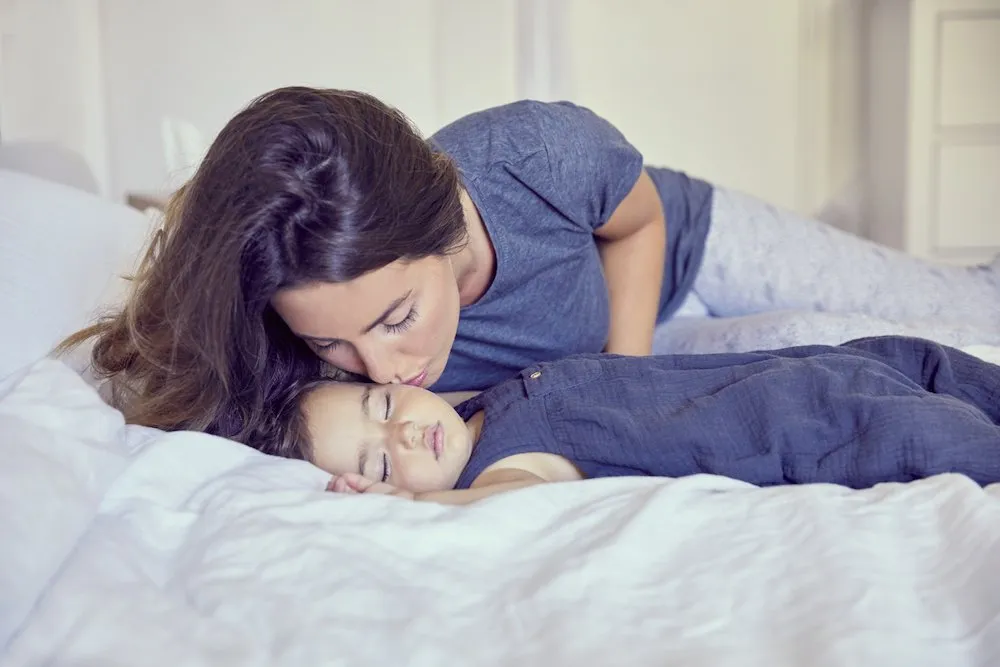Hey! You need a successful school night routine for children and parents. It promotes healthy sleep habits; sleep medicine reduces stress and fosters calmness. This guide provides a comprehensive overview of creating and implementing a routine.
For more tips on managing early wake-ups, check out our guide on baby waking up too early. Also, don’t miss our bedtime routine for school age guide for even more great ideas.
Benefits of a school nightly routine for preschool kids
Establishing a consistent nighttime school routine for preschoolers can positively impact their overall development and well-being. A well-structured nighttime routine for preschoolers has numerous benefits.
💤 Improved sleep quality
😵 Reduced stress and anxiety
❤️ Enhanced emotional regulation
🧘 Promotes organization
A structured bedtime routine for preschoolers eliminates guesswork and expectations, which eases the transition to sleep and reduces anxiety.
"Several studies have shown that a bedtime routine is associated with positive child mood and enhanced emotional–behavioral regulation. "
💡 National Institutes of Health
How to create a family-friendly school night routine
Here's a basic bedtime routine checklist for kids ages 3-5:
- Complete any take-home tasks.
- Time for splashing and getting clean!
- Put on pajamas.
- Brush teeth.
- Pick out tomorrow's outfit.
- 15-20 minutes of calm play in their bedroom with dim lights.
- Read a book: Snuggle up for a bedtime story.
- Take a final bathroom break.
- Lights out: Close your eyes and drift off to sleep.
To find out the perfect time to take your kid to bed by age visit our article: Age-appropriate bedtime routines for kids.

Start by planning the ideal for everyone, organize your ideas, and to put them into practice to be as realistic as possible. Keep in mind that at the time of application you must be consistent for a long time.
School nightly routine for kids
A consistent bedtime routine is crucial to children's well-being, and visual schedules are recommended as they provide a clear and effective way to communicate and reinforce consistent bedtime routines.
1. Include your child in the routine
Include your child in the routine by letting them splash and play during bath time, choosing their pajamas, brushing their teeth with supervision, picking out their outfit for the next day.
Engaging in quiet play activities together, selecting a bedtime story, reminding them to use the toilet before bed, and helping turn off the lights to settle down for sleep.

A consistent bedtime routine is crucial to children's well-being, and visual schedules are recommended as they provide a clear and effective way to communicate and reinforce consistent bedtime routines.
2. Begin wind down
Start winding down an hour or two before bed. This will give your child time to relax from the day's activities. For example:
🛀 Bathing
🦷 Brushing teeth
🛏️ Using the restroom
👚 Putting on pajamas
3. Massage with stories
Open the Storybook App for the right massages for your child. Follow the steps in Storybook and your child's cues (Pay attention to your child's cues and adjust pressure and technique accordingly).
Remember to press gently and use long, flowing strokes as instructed by the app!
4. Music to deep sleep
Play soothing music in the Storybook App playlists. It can be classical music, nature sounds, or white noise, and you're done. For more tips on extending naps, check out our guide on how to extend toddler naps.
5. Lights out
Darkness helps to signal to the body that it is time to sleep after turning off your baby's lights in the Storybook App you can get meditations and affirmations to help you connect much better with your baby in this step.
School nightly routine for parents
- Have a nutritious family dinner, and use this time to share stories and connect.
- Set aside a specific time for homework and studying: create a quiet and organized study space.
- Pack school bags and organize necessary materials for the next day.
- Lay out clothes for the morning to streamline the morning routine.
- Bathing and personal hygiene, the best would be to incorporate a calming bath or shower into the routine.
- Encourage quiet activities in the last 30 minutes before bedtime to help transition to a regular sleep schedule.
- Establish bedtime rituals, such as a goodnight hug or kiss.
- Offer reassurance and create a positive bedtime atmosphere.
- Use the remaining evening time for your relaxation or self-care.
Ideal sleep duration for school-age kids
The ideal sleep duration for school-age kids varies based on their age. Here are general recommendations:
- Preschoolers (3-5 years): 10-13 hours per night
- School-age children (6-12 years): 9-12 hours per nigh
- Teenagers (13-18 years): 8-10 hours per nigh

What time should a child go to bed on a school night?
If your child wakes for school at 7 am and needs approximately 10 hours of sleep per night, they should be in bed before 9 pm. Some children fall deeply asleep very quickly when they go to bed. Others sleep lightly, fidgeting and muttering for up to 20 minutes before getting into deep sleep. For more insights, visit our blog on what time should kids go to sleep.
Tips to establish a back-to-school sleep routine
⌚ Set a consistent bedtime and wake-up time
Choose bedtimes and wake-up times that allow your child to get enough sleep, typically around 8-10 hours for children ages 5-13.
If you want to know the right hours to put your child to sleep, stop by our blog ➔ ➜ what time should kids go to sleep
📚 Designate a homework-free zone
Create a specific area in the home for homework, separate from the bedroom and any relaxation spaces.
🌮 Start with a healthy and filling dinner
Avoid heavy meals or sugary snacks close to bedtime, as they can lead to discomfort and make it harder to fall asleep. Opt for lighter fare, such as lean proteins, whole grains, and fruits and vegetables.
🙇🏻 Incorporate calming unwinding activities
Engage in activities promoting calmness and sleep preparation, such as reading bed time stories, warm baths, or soothing music.
If you need more detailed information about toddler sleep schedules, please refer to our article. Toddler sleep schedule
🛌🏻 Make sure your child's bedroom is dark, quiet, and calm
Make sure everything is adequate, dark, quiet, and comfortable.
"Clear and consistent routines provide structure. The structure is synonymous with stability and, fore, security. Don't forget the importance of establishing routines with your little ones."
💡Dra. Lorena Koppel
🥇Reward positive behavior
Positive reinforcement can be a powerful tool to encourage adherence to the bedtime routine. Acknowledge and reward your child when they follow the routine consistently and demonstrate positive sleep behaviors.
Remember, positive reinforcement should focus on acknowledging and rewarding progress rather than punishing setbacks. Create a supportive and encouraging environment where your child feels empowered to change their sleep habits positively.
Stay up-to-date on parenting tips, child development insights, and practical strategies for fostering a happy and healthy family.→→Advice for new parents

Written By
Francisco Cornejo, a dynamic entrepreneur with a Masters in Communication from RMIT University in Australia, is the Co-Founder and CEO of Storybook. As a serial entrepreneur, he notably served as the Chief Marketing Officer at Honda Motors in Latin America, shaping the brand's regional presence. Passionate about family well-being and communication, Francisco leads Storybook in its mission to improve children's health globally, aiming to create positive impacts in both corporate and societal spheres.
References
- Li, X., Zhang, H., Zhang, R., Cheng, C., & Wang, Y. (2019). Associations between screen time and sleep duration are modified by media type in school-aged children. Public Library of Science ONE, 14(6), e0217484. https://www.ncbi.nlm.nih.gov/pmc/articles/PMC6587181/
- National Sleep Foundation. (n.d.). Bedroom environment. Retrieved from https://www.sleepfoundation.org/bedroom-environment










.jpg)

